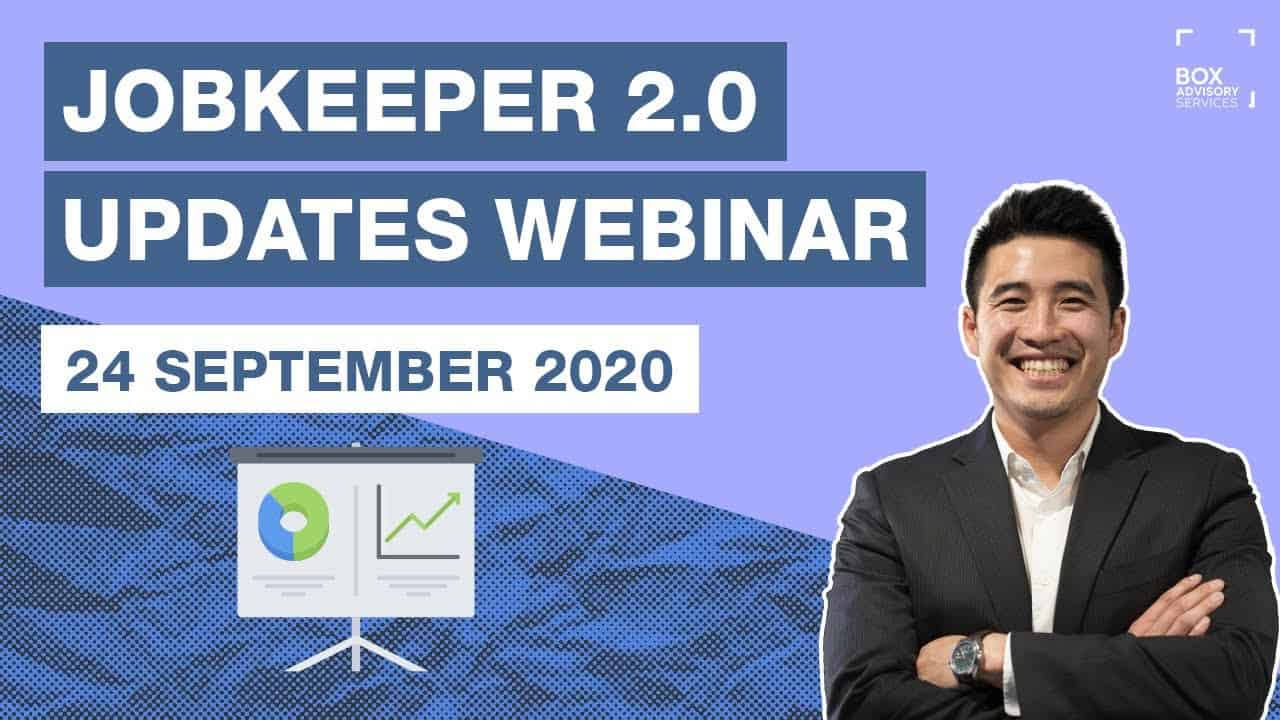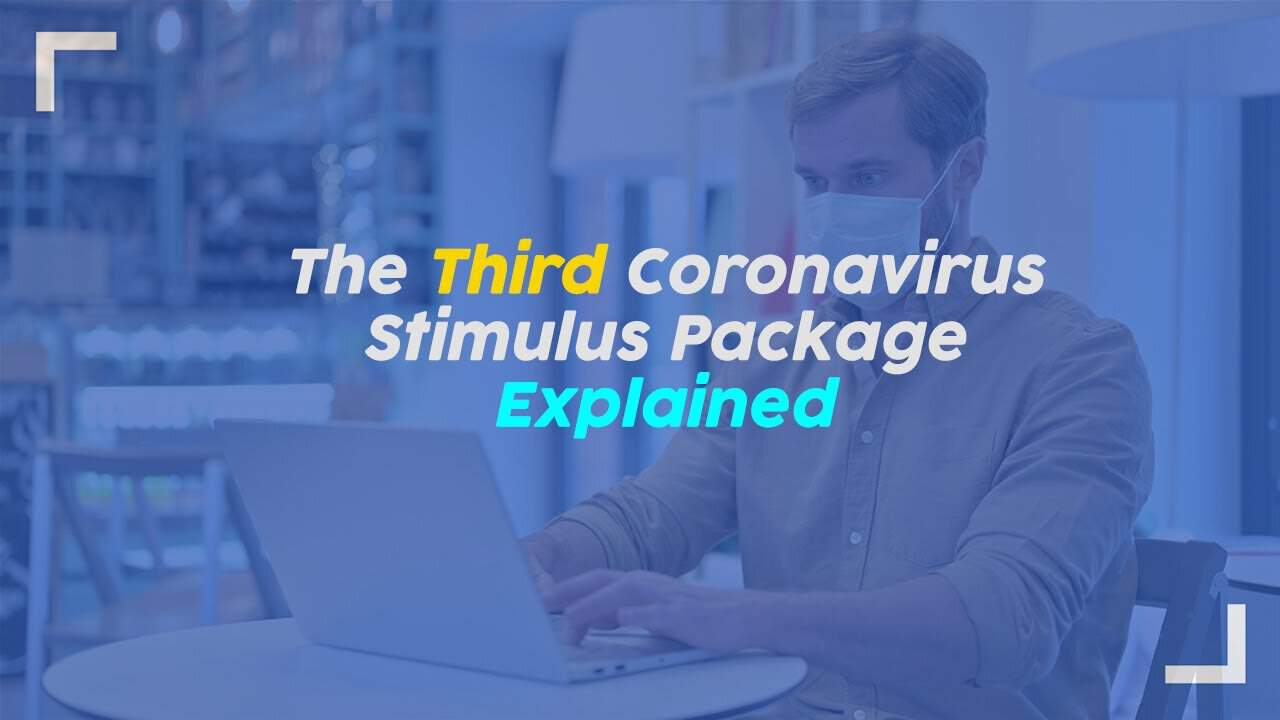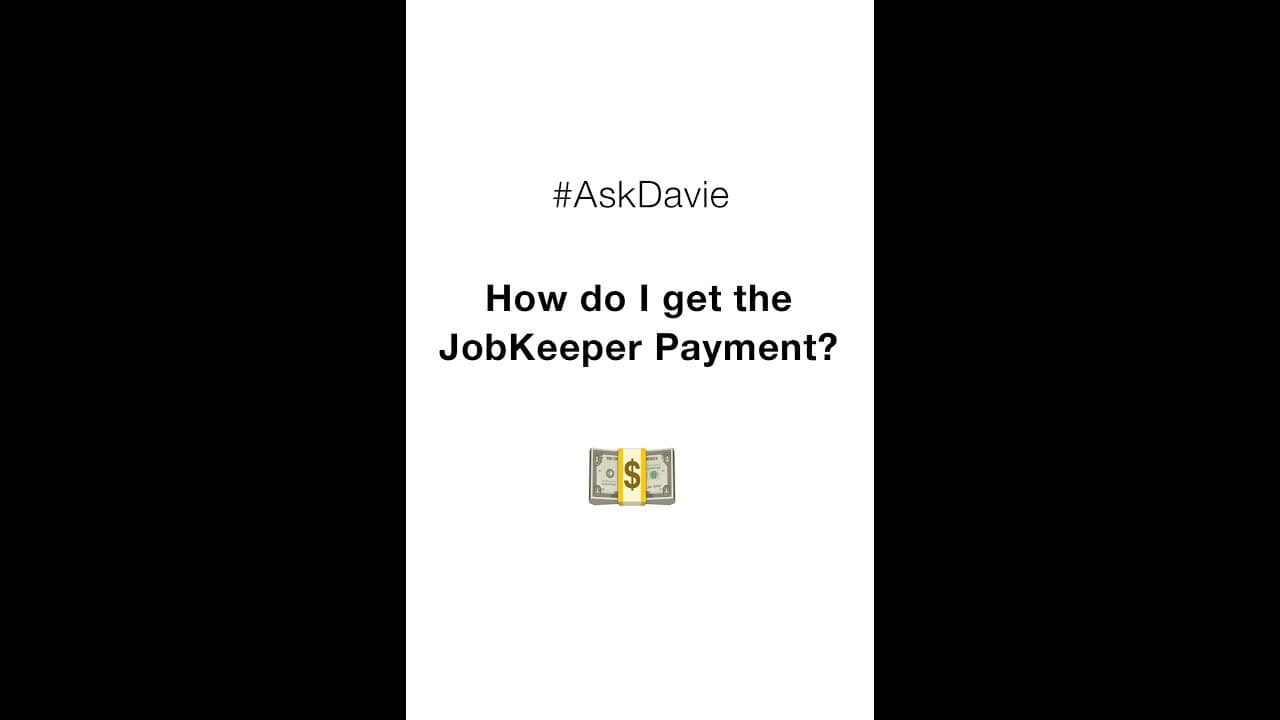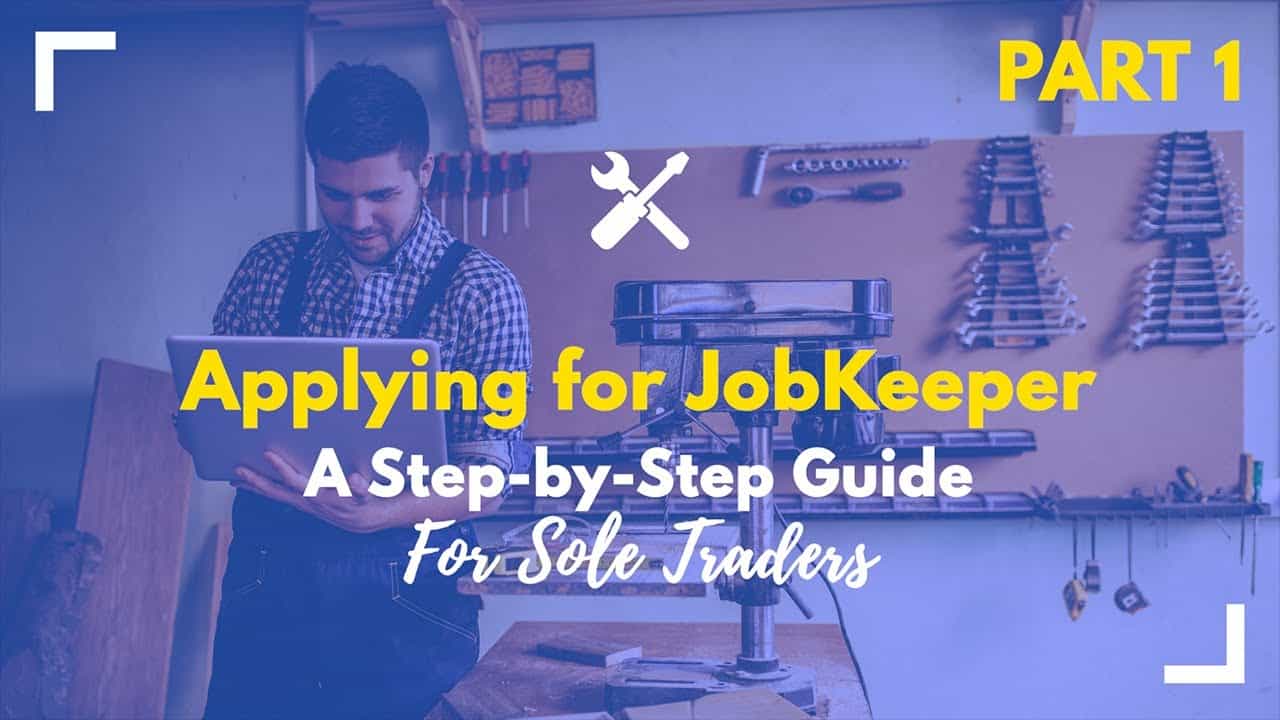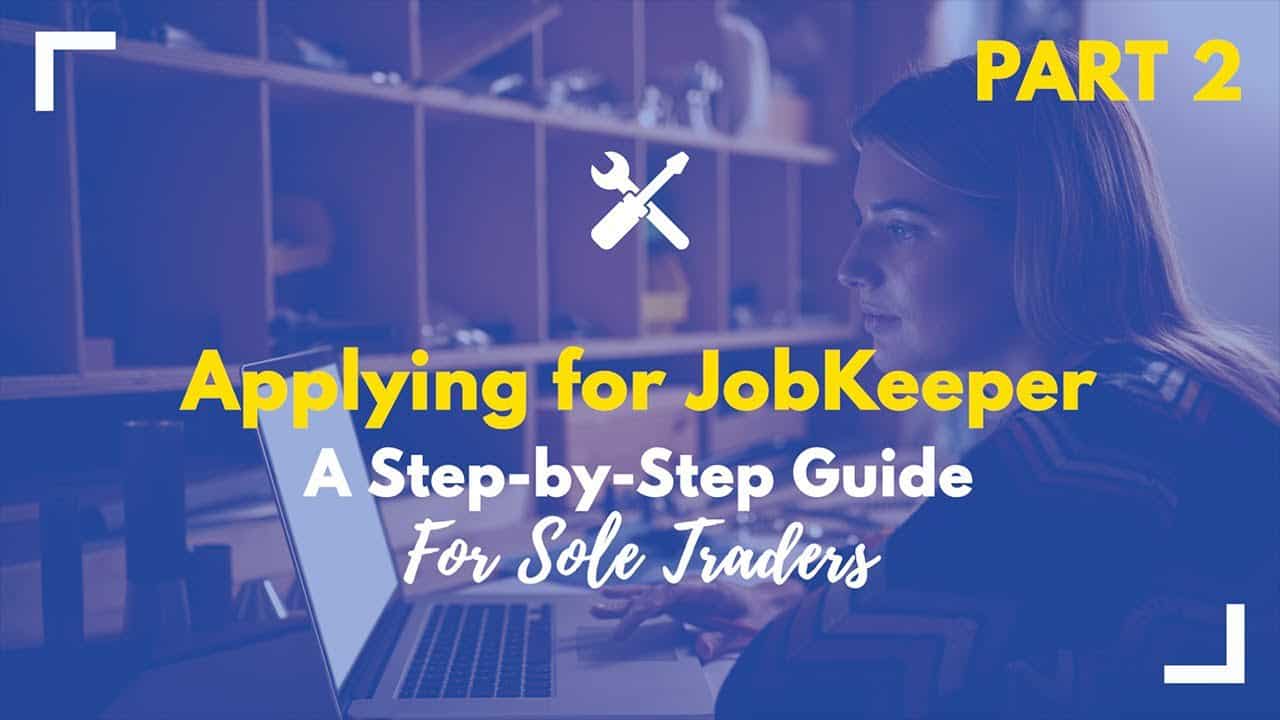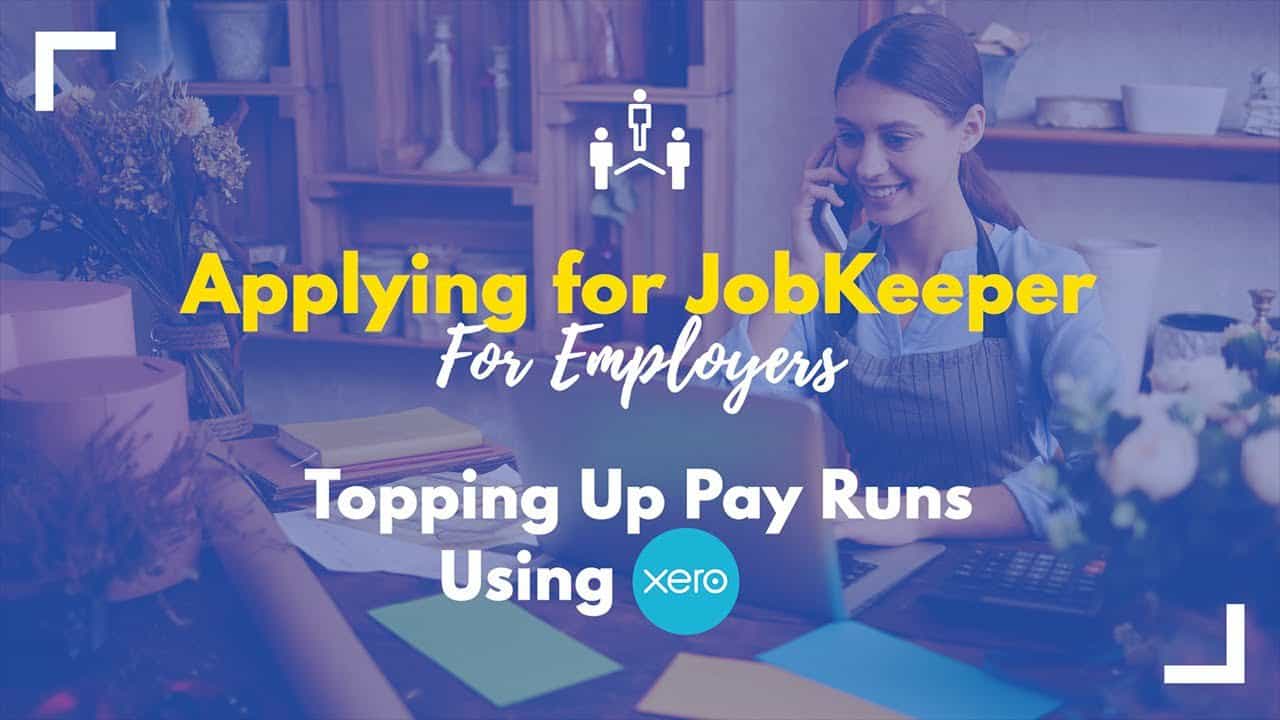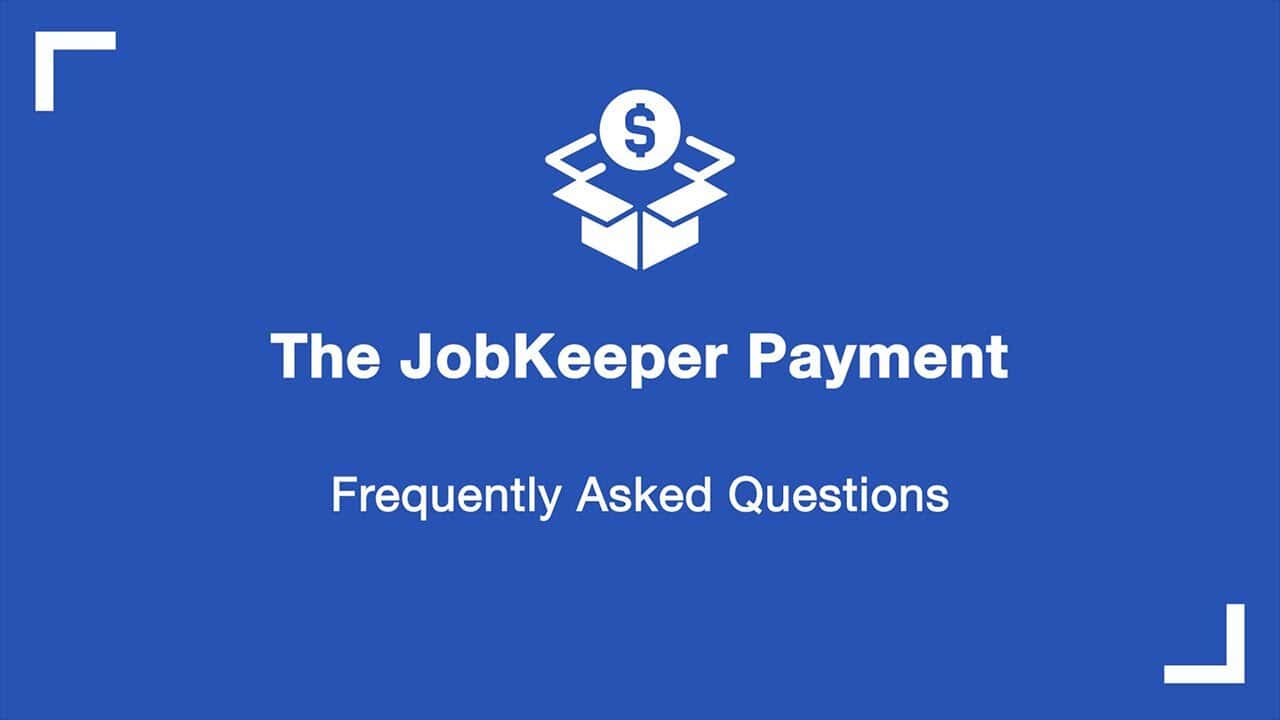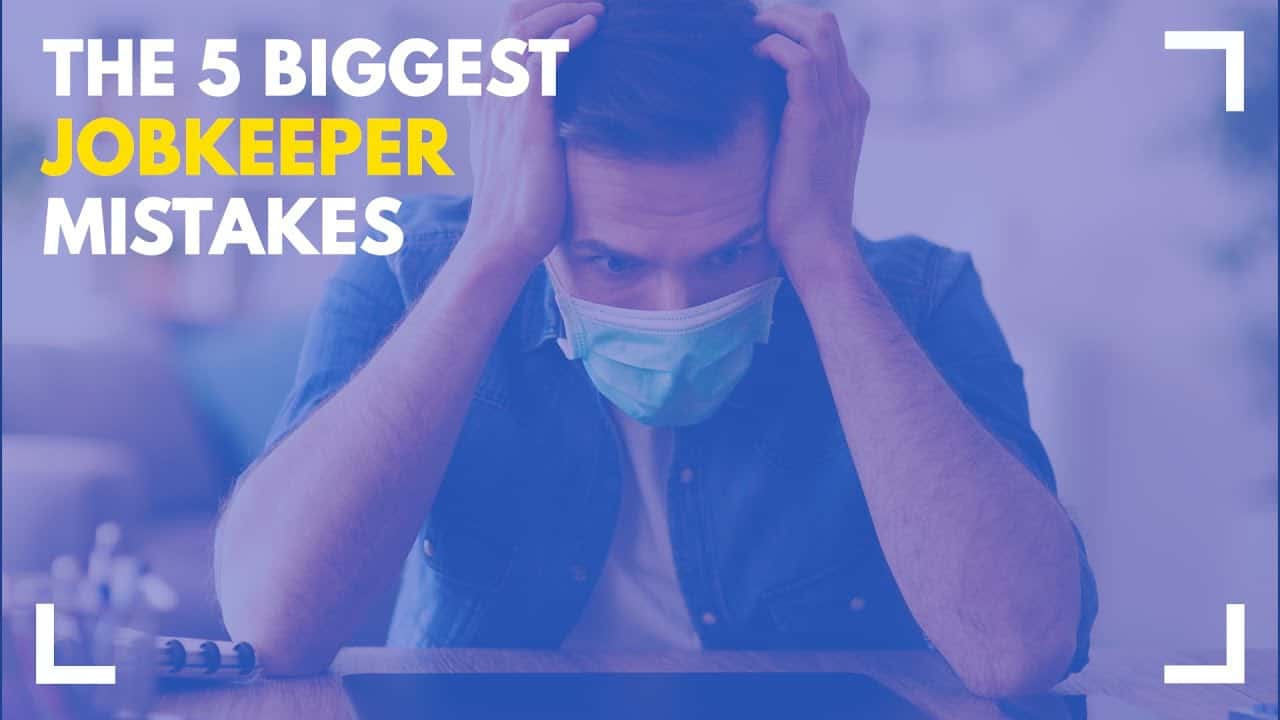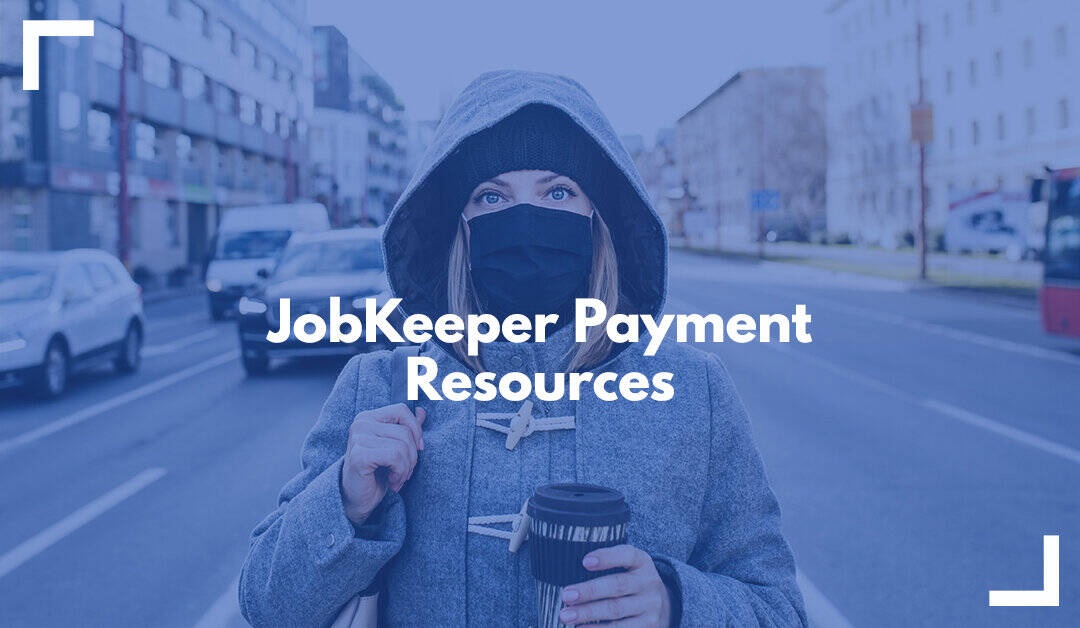
BY
|
JobKeeper 2.0 Resources Page
Last updated: 2 October 2020
JobKeeper 2.0
The Federal Government is set to extend JobKeeper for an additional six months until March 2021 but there will be reduced payments and retesting of eligibility after the current JobKeeper scheme runs out in September.
This will involve a new measure of actual turnover change to become more targeted.
New JobKeeper Rates
It’s expected that there will be two payment tiers to cover for those who were earning more on JobKeeper than their regular wages, particularly part-time and casual staff.
It’s announced that the two tiers of payment will commence from 28 September 2020 until 4 January 2021:
- A flat rate of $1,200 per fortnight for eligible workers working more than 20 hours per week
- A flat rate of $750 per fortnight for eligible workers working less than 20 hours per week
From 4 January to March 28 2021, the two payments will scale down to:
- A flat rate of $1,000 per fortnight for eligible workers working more than 20 hours per week
- A flat rate of $650 per fortnight for eligible workers working less than 20 hours per week
Additional Changes
The ATO has announced that there are some additional changes that apply from 14 August 2020:
- More employees that have been hired after March can qualify for JobKeeper 2.0
- Long-term casual employees who now qualify can be used with the 1 July 2020 turnover test
Turnover Test Re-Applied in September
Businesses will be required to re-apply for the eligibility test that shows they have had a reduction of 30% or more in turnover the September quarter.
JobKeeper Audits
The ATO has announced that JobKeeper audits will be a heavy focus on ensuring all businesses that have claimed for JobKeeper 1.0 are compliant. Check out our guide on JobKeeper audits.
JobKeeper 1.0
A third stimulus package has been officially announced on 30 March 2020 called the ‘JobKeeper’ payment. This is a wage subsidy of $1,500 a fortnight that will be paid to employers for employees from businesses affected by the Coronavirus for the next six months. Employers and sole traders can claim from 30 March 2020. Payments will be made in arrears for each month following the submission of your business activity information.
A particular criterion is required to meet eligibility for this subsidy but will be available to both employers, sole traders with employees and sole traders without employees.
For information on all other COVID-19 related support packages, click here.
Eligibility: Employers
Your business needs to have seen a 30% reduction recently or moving forward in turnover (in comparison to 12 months ago) then your business may be eligible. This also applies to sole traders with similarly reduced turnover.
Eligibility: Employees
This payment applies to full time, part-time, sole traders and casuals (if employed for more than 12 months) who were employed by the business as at 1 March 2020. This will also extend to employees who have been stood down recently due to the impact of COVID-19. Employees must be an Australian citizen, holder of a permanent visa, protected SCV holder or non-protected SCV holder. Employees must not be receiving the JobKeeper payment from another employer.
NOTE: Changes have made to how prove you have had a 30% (or 50%) reduction in business income:
To establish that a business has faced either a 30 (or 50) per cent fall in their turnover, most businesses would be expected to establish that their turnover has fallen in the relevant month or three months (depending on the natural activity statement reporting period of that business) relative to their turnover a year earlier. Where a business was not in operation a year earlier, or where their turnover a year earlier was not representative of their usual or average turnover, (e.g. because there was a large interim acquisition, they were newly established or their turnover is typically highly variable) the Tax Commissioner will have discretion to consider additional information that the business can provide to establish that they have been significantly affected by the impacts of the Coronavirus. The Tax Commissioner will also have discretion to set out alternative tests that would establish eligibility in specific circumstances (e.g. eligibility may be established as soon as a business has ceased or significantly curtailed its operations). There will be some tolerance where employers, in good faith, estimate a greater than 30 (or 50) per cent fall in turnover but actually experience a slightly smaller fall.
Sole Traders & Other Entities
While employers have a wage condition that must be met that requires them to pay a minimum of $1,500 per fortnight to their eligible employees, this condition does not apply for entities that are eligible based on business participation.
For these businesses which include sole traders, partnerships, trusts and companies, they will need to nominate an eligible business participant, who must not be employed by the entity, and be actively engaged in the business. This would be:
- A sole trader
- A partner in a partnership
- An adult beneficiary of the trust
- A shareholder or director in the company
The JobKeeper payment received from the ATO instead forms part of the assessable income of the entity. What the entity does with the payment after is up to the entity as there’s no requirement to pay it out or pay it to the nominated individual.
While this is straightforward for sole traders and partnerships who have no requirement for the entity to register for PAYG withholding or Single Touch Payroll, or pay salaries/wages to the individual, companies and trusts don’t have to pay the JobKeeper payment out to the individual if they’ve only ever made trust distributions or paid dividends.
Box Advisory Services “Done For You” JobKeeper Service
Box Advisory Services is offering a JobKeeper lodgement and reporting service:
- We’ve setup a COVID-19 Task Force specifically to ensure that you give yourself the best shot at receiving the JobKeeper Payment as well as all other government grants/schemes
- This service is being at a reduced rate (see pricing schedule below)
- This service is offered as a “no JobKeeper no fee” service. If your company is ineligible or the ATO declines your JobKeeper payment, we will not charge for our time
- Free fortnightly webinars for clients and small business owners to help answer any questions you may have
| Business Size | Per Month ($) | Six Month Total ($) |
| Sole Traders & 0 – 2 Employees | 150 | 900 |
| 3 – 5 Employees | 220 | 1,320 |
| 6 – 10 Employees | 400 | 2,400 |
| 10+ Employees | Enquire for a quote | |
Note: Prices exclude GST. Payments for the “Done For You” Service can be spread over the next 6 months to ensure you can afford the service with minimal impact to your cashflow
If you’re interested in having the Box AS team look after your JobKeeper needs, you can either give us a call, send us an email at info@boxas.com.au or directly submit your information to us and we’ll get in touch with you to review your situation. Click here to submit your information.
Key Dates
- From 20 April: enrol for JobKeeper payment.
- By 26 April: enrol and pay your employees to claim JobKeeper payments for April.
- 4 May onwards: identify your employees.
- Each month: reconfirm eligibility
- 8 May 2020 is the new cutoff date for topping up wages to $1,500 a fortnight
- The ATO has extended the deadline for JobKeeper applications from 30 April 2020 to 31 May 2020. By enrolling by 31 May 2020, you are still eligible to be paid in arrears from 30 March 2020, but will not receive this until the first week of June
How to Apply for JobKeeper Payments
Lodgements can be made by your accountant or yourself.
Step by Step Guide to Enrol for JobKeeper Payment:
Step 1 – Register your interest and subscribe for JobKeeper payment updates.
Step 2 – Check you and your employees meet the eligibility requirements (see above)
Step 3 – Continue to pay at least $1,500 to each eligible employee with the first JobKeeper fortnight is the period from 30 March to 12 April
Step 4 – Notify your eligible employees (both existing and stood down if you plan to re-hire) that you are intending to claim the JobKeeper payment on their behalf and check they aren’t claiming JobKeeper payment through another employer or have nominated through another business.
Step 5 – Send the JobKeeper employee nomination notice to your nominated employees to complete and return to you by the end of April if you plan to claim JobKeeper payment for April. This needs to be kept on file or given to your tax agent.
Step 6 – From 20 April 2020, you can enrol with the ATO using the Business Portal and authenticate with MyGovID. This must be done before the end of April for the April payments
Step 7 – In the online form, provide your bank details and indicate your business participation entitlement
Step 8 – Specify the estimated number of employees who will be eligible for the first JobKeeper fortnight (30 March – 12 April) and the second JobKeeper fortnight (13 April – 26 April)
Step by Step Guide for Confirmation of Eligible Employees to Claim JobKeeper Payment:
Step 1 – Apply to claim the JobKeeper payment by logging in to the ATO Business Portal
Step 2 – Ensure you have paid each eligible employee a minimum of $1,500 per JobKeeper fortnight before tax.
Step 3 – Identify your eligible employees in the application form by
– Selecting employee details that are prefilled from your STP pay reports if you report payroll information through an STP enabled payroll solution, or
– Manually entering employee details in ATO online services or the Business Portal if you do not use an STP enabled payroll solution, or
– Using a registered tax agent who will submit a report on your behalf through Online services for agents.
Step 4 – Submit the confirmation of your eligible employees online and wait for the confirmation screen.
Step 5 – Notify your eligible employees you have nominated them.
Step 6 – The ATO will pay you the JobKeeper payment for all eligible employees after receiving your application.
Step 7 – Each month, you will need to reconfirm that your reported eligible employees have not changed through ATO online services, the Business Portal or via your registered tax agent. This will ensure you will continue to receive the JobKeeper payments from us. You do not need to retest your reported fall in turnover, but you will need to provide some information as to your current and projected turnover. This will be done in your monthly JobKeeper Declaration report.
Step 8 – If your eligible employees change or leave your employment, you will need to notify us through your monthly JobKeeper Declaration report.
Note that if you use the ATO Business Portal, you will need a MyGovID linked to your ABN in Relationship Authorisation Manager (RAM). More steps can be found here.
Sole Trader Video Walkthrough for JobKeeper Application
How to Qualify for the JobKeeper Payment
For a business to qualify to apply for the JobKeeper payment, they must meet a turnover test. The ATO has outlined a basic test and an alternative test If your business fails to pass the basic turnover test, you may be eligible for JobKeeper payments using the alternative testing method released on 23 April 2020.
Note: If your business meets the basic turnover test, you do not need to use the alternative test
Basic Test
The basic test is satisfied when your projected monthly or quarterly turnover falls by more than 30% when compared to the same period last year.
To qualify for the start of the JobKeeper scheme where you will be paid in arrears from 30 March 2020, you must use either March 2020 or April 2020.
For turnover for a quarter is being used, it can be for 1 April – 30 June 2020 or 1 July to 30 September 2020.
This can be calculated based on either a cash or accruals basis.
The Alternative Test
The alternative test is only used if your business does not meet the basic test. The ATO has outlined seven scenarios where your business may face that make it impossible for you to meet the basic test requirements. These are:
- Your business is a start-up or a new business trading less than 12 months
- Your business went through an acquisition or disposal
- You had a business restructure
- A major increase in turnover
- Your business was affected by a drought or natural disaster
- Your business experiences irregular turnover
- You’re a sole trader or small partnerships with sickness, injury or leave
Test #1: Start-ups/New Business
If you started your business before 1 March 2020 and cannot compare against the same period in 2019, you can use this test.
Instead, you can either test your average monthly current GST turnover or 3 months (quarterly) current GST turnover if you started before 1 December 2019.
Test #2: Business Acquisition or Disposal
If your business went through an acquisition or disposal that has affected your turnover between your comparison periods.
To calculate, choose the month after the acquisition or disposal. This formulates the new comparison period which you can compare. This can also be done for quarterly periods as well.
Businesses that have gone through multiple acquisitions or disposals during this period will need to compare from the most recent event. If there is no whole month after the most recent event, then the comparison period can be the month immediately before the comparison period.
Test #3: Business Restructure
Businesses that have wholly or partly restructured between your comparison periods can apply the alternative test.
To calculate, choose the month after the restructure. This formulates the new comparison period which you can compare. This can also be done for quarterly periods as well.
Businesses that have gone through multiple restructures during this period will need to compare from the most recent event. If there is no whole month after the most recent event, then the comparison period can be the month immediately before the comparison period.
Test #4: Major Increase in Turnover
High-growth businesses, including start-ups, that have seen a significant increase in turnover in the past 12 months but still suffered a decrease in income can apply the alternative monthly or quarterly turnover test. There are three scenarios that can be applied:
- 50%+ growth in the last 12 months
- 25%+ in the last 6 months, or
- 12.5%+ in the last 3 months
You can calculate by selecting your turnover test month (e.g. March 2020) and comparing it with the period immediately before this turnover test period. In this case, you will need to calculate turnover for December 2019, January 2020 and February 2020, divide the total by 3 months and compare this with March 2020.
Test #5: Drought or Natural Disaster
This can be applied if your business was conducted in a declared drought or a natural disaster zone and was has affected your turnover.
Compare with the year prior to the declaration of the drought or disaster zone for your comparison period. For example, comparing March 2020 to March 2018 if your business was affected in March 2019 by a drought or natural disaster.
Test #6: Irregular Turnover
If your business is not considered cyclical (i.e. same seasonal variance every year), you will need to prove a significant change in your monthly or quarterly turnover.
To calculate, your business is eligible if during the 12 months leading up to the turnover test period, the quarter with the highest turnover also saw more than double (50%+) the income of the lowest-performing quarter.
Test #7: Sole Trader or Small Partnership with Sickness, Injury or Leave
If you run a sole trader or small partnership business with no employees, and you or one of the partners couldn’t work during a relevant period that affects your turnover, you may use this alternative test. A small partnership should involve no more than 4 individuals.
Calculate the turnover for the month after the sole trader or partner returned to work as your new comparison period of turnover with your chosen monthly or quarterly turnover test.
Topping Up Pay Runs for Employees on Xero
Frequently Asked Questions
Q: When will I start receiving the JobKeeper payments?
A: The first payment will be in Week 1 of May backdated to 30 March 2020. Moving forward, you’ll be paid monthly in arrears. However, the scheme operates on a fortnightly basis. The first fortnight period will begin on 30 March 2020 to 12 April 2020. The payments will last for six months.
Q: How do I show a 30% reduction in turnover?
A: You’ll need to compare your turnover with the same period last year. For example, April – June Quarter 2020 will need to be compared with April – June Quarter 2019. This will also involve forecasting to estimate potential future revenue shortfalls.
Q: What if my business has been operating for less than 1 year?
A: An alternative test has been outlined by the ATO on assessing businesses who have been operating for less than a year.
Q: How do I prove a loss of income as a sole trader?
A: Sole traders can still apply even if your income is below $75,000 and you don’t report BAS or GST. You will need to still demonstrate the 30%+ loss of income.
Q: Which of my employees are eligible for the payment?
A: Full-time and part-time employees are automatically eligible as long as they’ve been employed since 1 March 2020. Casuals must be employed for at least 12 months. If your employee doesn’t qualify, they’ll need to apply for JobSeeker payment with Centrelink. The employee must also have citizenship, permanent residency or a permanent visa, and must be 16 years or older.
Q: What if my employee makes more (or less) than $1,500 per fortnight?
A: If your employee is usually paid less than $1,500 per fortnight, you must still pay them the full $1,500 per fortnight. Employees who usually receive more than $1,500 per fortnight will still be able to be paid the $1,500 JobKeeper payment and the difference will need to be made up by the employer to keep them on your payroll. It’s also possible to reduce their hours or re-purpose their role if you follow Fair Work’s laws around this.
Q: What about employees I’ve terminated or stood down?
A: You can re-hire employees as long as they were employed as of 1 March 2020. This can be an employee who’s either been made redundant or stood down.
Q: Can my employee still receive JobKeeper if they aren’t comfortable working during COVID-19?
A: This is at the discretion of the employer. If an employee has expressed that they’re not comfortable working during COVID-19, then the employer has the option to either stand down the employee and re-hire if they want to apply for the JobKeeper for this specific employee or not apply at all.
Q: If my employee has two jobs, how does this affect the JobKeeper payment?
A: Only one employer can receive the JobKeeper Payment for a particular employee. If your employee works two jobs, then they will need to nominate one employer to receive the JobKeeper payment.
Q: Do I need to pay the full $1,500 to my employee?
A: Yes you must. You cannot pocket any amount before paying this to your employee nor can you force your employee to pay back any portion of this payment.
Q: Is the JobKeeper payment made to employees subject to superannuation?
A: This depends. For example, if an employee is paid more $3,000 per fortnight and receives a JobKeeper Payment of $1,500 per fortnight, then superannuation will need to be paid on the entire $3,000.
For employees that receive under $1,500 – for example, an employee that receives $1,000 a fortnight – then the employer will need to pay superannuation on the $1,000 and has the option to pay superannuation on the additional $500 difference.
Q: What are the anti-avoidance and integrity rules that are applicable to JobKeeper payments?
A: There are severe penalties associated with anti-avoidance and scheming. This is based on Part IVA of the Income Tax Assessment Act 1936. Any arrangements that can be objectively assessed as entered with the intention of accessing the JobKeeper Payment when in normal circumstances you would not qualify, would result in these penalties. For example, trying to either manipulate a greater reduction in turnover or to backdate employment dates would fall under these rules.
Q: Can an employer decide which employees they want to nominate?
A: The ATO has outlined that when applying for the JobKeeper application, you must include all employees.
Q: What happens if my predicted fall in turnover happens to be incorrect, so that the fall ends up being less than the 30% or 50%?
A: This does not necessarily mean you are ineligible for JobKeeper.
Your projected turnover is a point-in-time test and needs to be a reasonable assessment of what was likely at the time you calculated the test. If at a later stage, it eventuates that your actual turnover for your test period is greater than the prediction of your projected turnover, you do not lose access to JobKeeper. The ATO will accept your assessment of these turnovers unless they deem this to be unreasonable. Therefore, it’s highly important to keep good records in the event of an audit.
Who Should Use the Business Nomination Form notice?
A: The Business Nomination Notice when claiming for the Jobkeeper Payment, can be used for any entity excluding sole traders. Each business can nominate one “business participant” who is considered a non-employee individual of the entity if they meet the following criteria:
- They are not employed by the entity
- They are actively engaged in the business carried on by the entity at 1 March 2020 and the fortnights that are being claimed
- They are a partner in a partnership, an adult beneficiary of the trust, a shareholder or a director in a company
- Aged 16 years or older
- An Australian resident, or resident for income tax purposes and holder of a special category (Subclass 444) visa
- Not currently receiving government parental leave or Dad and Partner Pay
- Not totally incapacitated for work and receiving payments under an Australian workers’ compensation law
- They are not an employee of another entity
- Are not being nominated for JobKeeper with another entity
Links
Sole Traders for JobKeeper Payment
Employers paying through STP
Employers not paying through STPFactsheet
JobKeeper Sole Trader Factsheet
Jobkeeper Employer Factsheet
How Can Box Advisory Services Accountants Help with JobKeeper?
Box Advisory Services are a team of Chartered Accountants who are here to help small businesses and contractor businesses with their JobKeeper Payment applications and lodgements. Our team of accountants will be able to help you with the initial and ongoing JobKeeper requirements. Get in touch with us or make an appointment to find out how we can assess and help you with your business during the COVID-19 pandemic.
Disclaimer:
Please note that every effort has been made to ensure that the information provided in this guide is accurate. You should note, however, that the information is intended as a guide only, providing an overview of general information available to contractors and small businesses. This guide is not intended to be an exhaustive source of information and should not be seen to constitute legal or tax advice. You should, where necessary, seek a second professional opinion for any legal or tax issues raised in your business affairs.

